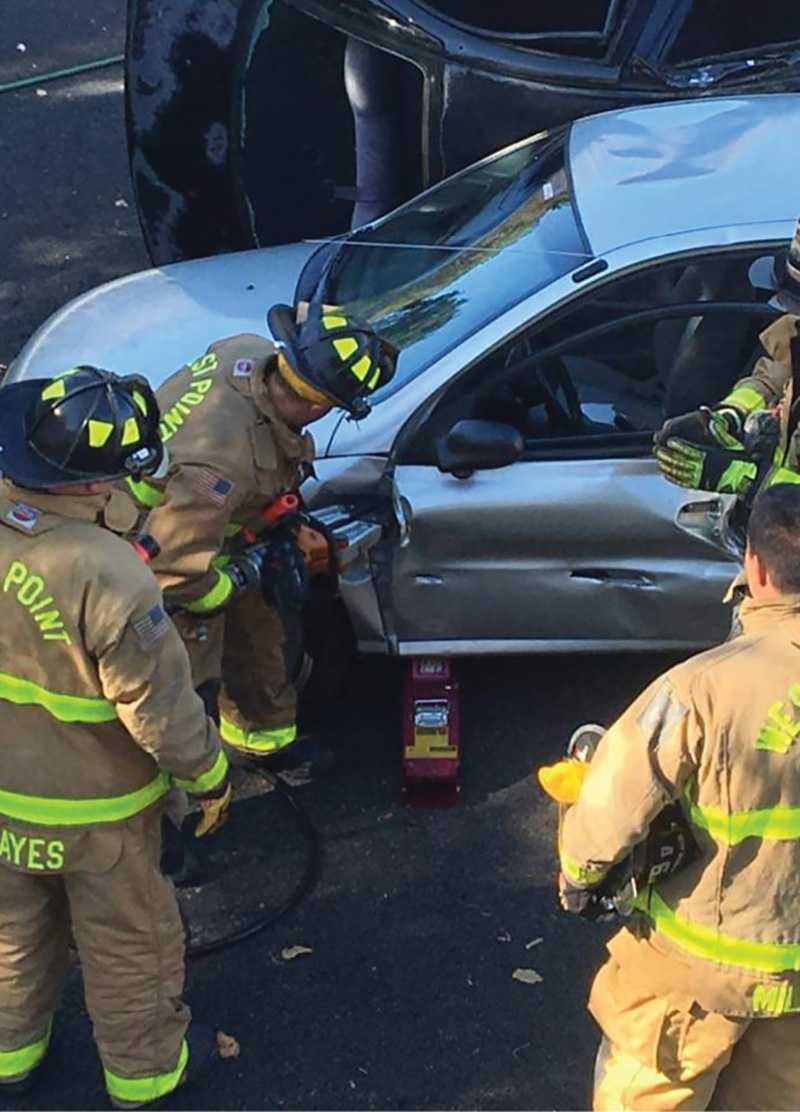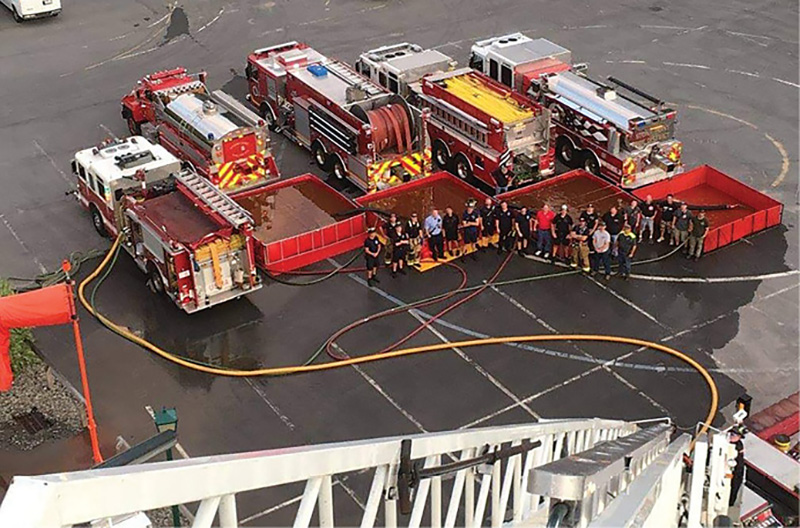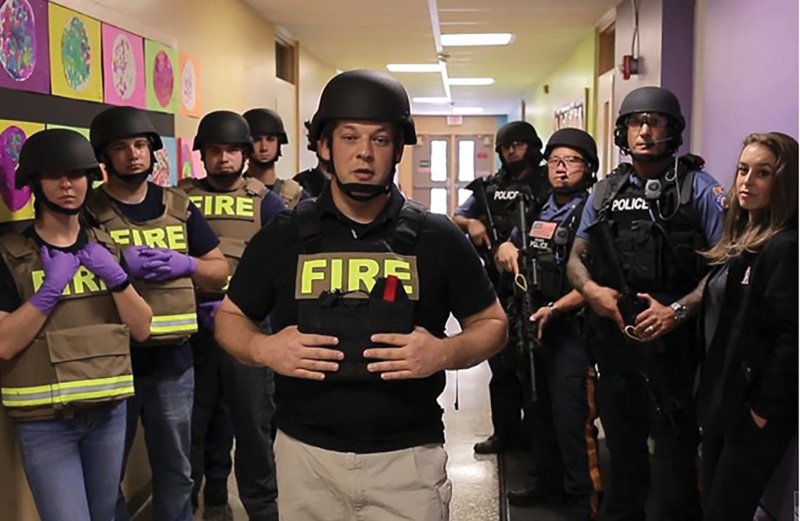Training Notebook ❘ By Dave McGlynn
In the world of firefighting, the role of a training officer is of paramount importance. This individual is responsible for shaping the skills, knowledge, and abilities of firefighters, ensuring they are well-prepared to face the challenges and dangers of their profession. However, not everyone is ready to be an effective training officer. This article explores what it takes to excel in this critical role and why it should not be taken lightly.
The Training Officer’s Crucial Role
It is not uncommon to come across individuals who seek the position of training officer for the wrong reasons. Some may be enticed by the promise of promotions. For others, the role may be a perceived escape from firefighting’s physical demands. This mindset can lead to complacency and a lack of ambition, which ultimately harms the development of a robust and effective training program.
Effective training is not about ticking off items on a checklist. It is about nurturing the skills and knowledge required for a proficient and progressive firefighting team. Training officers who fail to grasp this concept can produce subpar training programs that, in turn, result in subpar operations.
The Leadership Factor
One of the fundamental qualities that every training officer must possess is leadership. Being a training officer means you are a leader in the fire service. Whether you’re teaching a class or conducting a training drill, you are leading the way. As a result, firefighters look to you for guidance. This responsibility demands strong leadership skills, including coaching, mentoring, and program management.
It is important to note that you don’t become a leader overnight. Training officers who have never served in a leadership role or who have limited leadership experience can struggle in their position. The ability to inspire, motivate, and guide others is essential to success in this role.
Potential Challenges
The role of a training officer comes with a set of challenges that can test one’s spirit. These challenges include scheduling conflicts, recruitment and retention, and budget constraints.
Scheduling Conflicts
Scheduling conflicts happen. Having the ability to adapt and have “one in the chamber” in the event you need to pivot is important. Have a backup drill or lesson ready. It will give firefighters the opportunity to develop proficiency and it will sharpen their problem-solving skills.
Retention and Recruitment
Most of the fire service is volunteer. As a result, training officers face a very real possibility that some of their firefighters will be unavailable for training sessions. Due to the high demand for training requirements, many volunteers who have full-time jobs and families find themselves unable to meet their department’s expectations. They may be forced to take a leave of absence or leave the department altogether.
This retention challenge can also cause an issue in recruitment. Potential volunteers or full-time firefighters who become aware of the retention issues and the training requirements may feel discouraged from pursuing a role in the fire service.
Budget Constraints
Along with your other responsibilities as a training officer, you must understand—or learn—how to manage a budget. In fact, as a training officer, you need to basically be an accountant. You’ll need to understand budgeting. And here’s a hard truth: Despite your accounting efforts, you may have a fixed budget that does not support all of your training needs. This is where you, as the training officer, need to get innovative and understand the importance of networking.
Try to establish relationships with the resources surrounding you, including mutual-aid partners and businesses. Those relationships may lead you to materials, amenities, and additional resources that you can use to improve your department’s training program. Here are a few examples of resources you could acquire through networking:
- Lumberyard: If you have a lumberyard in your first-due area, building a relationship with the business owner may open you up to receiving donated materials that can be used to build training props (photo 1).
- Salvage yard (junkyard): If you have a salvage yard in your first due, introduce yourself to the business owner and discuss the possibility of having vehicles donated to your department. This will allow you to conduct real-life vehicle extrication training (photos 2 & 3).

1. Photos by Dave McGlynn unless otherwise noted.

2.

3.
Building those relationships is an investment that will multiply the benefit return to your training program for limited to no-cost impact on your budget.
Resistance to Change
“We’ve always done it that way.” Sound familiar?
Tunnel vision can be a prevalent issue among both firefighters and training officers. Having (or tolerating) a narrow and closed mindset can hinder the learning process and lead to low morale within the team. Unwillingness to adapt often stems from ego-driven resistance to change. Such attitudes can be detrimental to the efficiency and effectiveness of a fire department. If you’re a good training officer, you’ll take the traditions from the past and move them into the future by developing a progressive plan that encompasses preparedness and efficiency.
Organizational and Cultural Dynamics
The dynamics within a fire department, including its culture, are critical factors for a training officer to consider. Ignoring the existing culture or trying to impose a new one without proper consideration can lead to mistrust and resistance among firefighters. Instead, work to build mutual trust and work on cultural improvement. These essential steps will ensure a cohesive and efficient team.
Coaching, Mentoring, and Mutual Trust
Your role as a training officer will include both coaching and mentoring. These activities are integral to the role and require a foundation of mutual trust between the training officer and the firefighters. Without trust, the positive impact of coaching and mentoring may be limited. It is your responsibility to foster an environment where trust is established and maintained.
Building a Training Network
Collaboration with mutual-aid partners is essential for a well-rounded training program (photo 4). Firefighters must train with personnel from other departments to ensure seamless coordination during emergencies. Networking with others is easy. The sad truth is that in some cases we are too afraid to reach out to others. In other cases, we have too much pride and therefore choose not to communicate with outside organizations.

4. Photo courtesy of Dave McGlynn.

5. Photo courtesy of Fire Engineering’s Training Minutes, fireengineering.com.
Training officers sometimes say, “I don’t know where to start when it comes to networking.” It’s simple, as my brother and dear friend, Assistant Chief Steve Hamilton from the Fort Jackson (SC) Fire Department, has described. “It all starts with a handshake and a smile,” he says. It is literally that easy: Go out and meet your neighbors. See what they can offer you. Building a network of training partners can help overcome budget constraints and improve overall readiness.
Your training network should include the following, at a minimum:
- Fire departments (mutual-aid partners).
- Police departments.
- First-aid squads (EMS).
- Local government.
- Local businesses.
- Local utility services (includes water, power, and gas).
The Training Officer’s Top 10
To be a successful training officer, you need to demonstrate certain qualities and attitudes that go beyond simply following a checklist. Here are the top 10 qualities that define an effective training officer:
- Be a student. Continuously seek knowledge and certifications. Stay open-minded and receptive to innovative ideas and perspectives. By remaining a student of the craft, you will be more prepared to offer the tools and updated content your people need.
- Be an educator. Provide firefighters with the knowledge and skills they need to excel in their roles. Encourage their growth and development. The very nature of your job is to develop others!
- Be an inspiration. Inspire others through your actions and attitude. Encourage firefighters to become the best versions of themselves.
- Be credible. Gain the experience necessary to command respect from your team. Show proficiency in essential firefighting skills. Don’t fake it till you make it! Teach what you know and learn what you don’t.
- Be a leader. Lead by example and construct an effective training program. Understand the consequences of poor training and take responsibility for your team’s actions.
- Be confident. Exude confidence in your knowledge and delivery during training sessions. Reject intimidation while maintaining professionalism.
- Be humble. Appreciate the efforts of your team and acknowledge their achievements. Humility fosters an environment of mutual respect.
- Be resourceful. Develop problem-solving skills to make the most of limited resources and budget constraints. Network with others and strengthen your team’s abilities.
- Be passionate. Love what you do and be committed to the firefighting profession. Passion drives excellence and ensures an exceptional training program.
10. Leave a good legacy. Strive to make every firefighter better than they were before. Leave a lasting impact by nurturing future leaders of the fire service.
Being a training officer is not a stepping stone or a position to take lightly. It is a privilege and an opportunity to shape the future of firefighting. As a training officer, you must embody leadership, inspire the teams, and continuously strive for excellence. By possessing these qualities and taking the role seriously, you can leave a legacy and contribute to the safety and success of your fire department.
DAVE McGLYNN is a chief in the federal fire and emergency services. He is an instructor at FDIC International, a contributing author to Fire Engineering, a member of the FDIC and Fire Engineering Educational Advisory Board, and the host of the Fire Engineering podcast The Training Officer. McGlynn is also the author of The Training Officer: Do You Have What It Takes?

